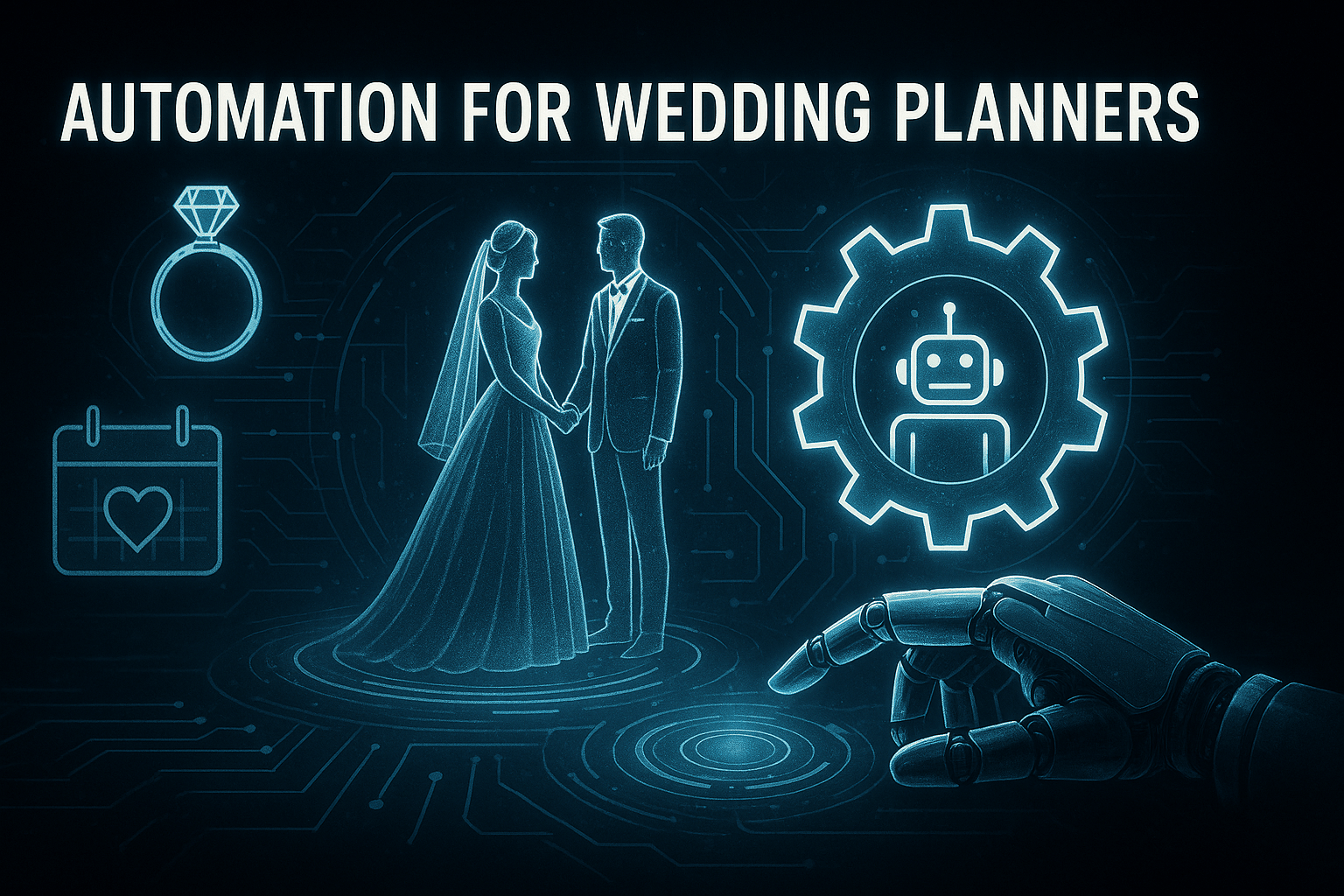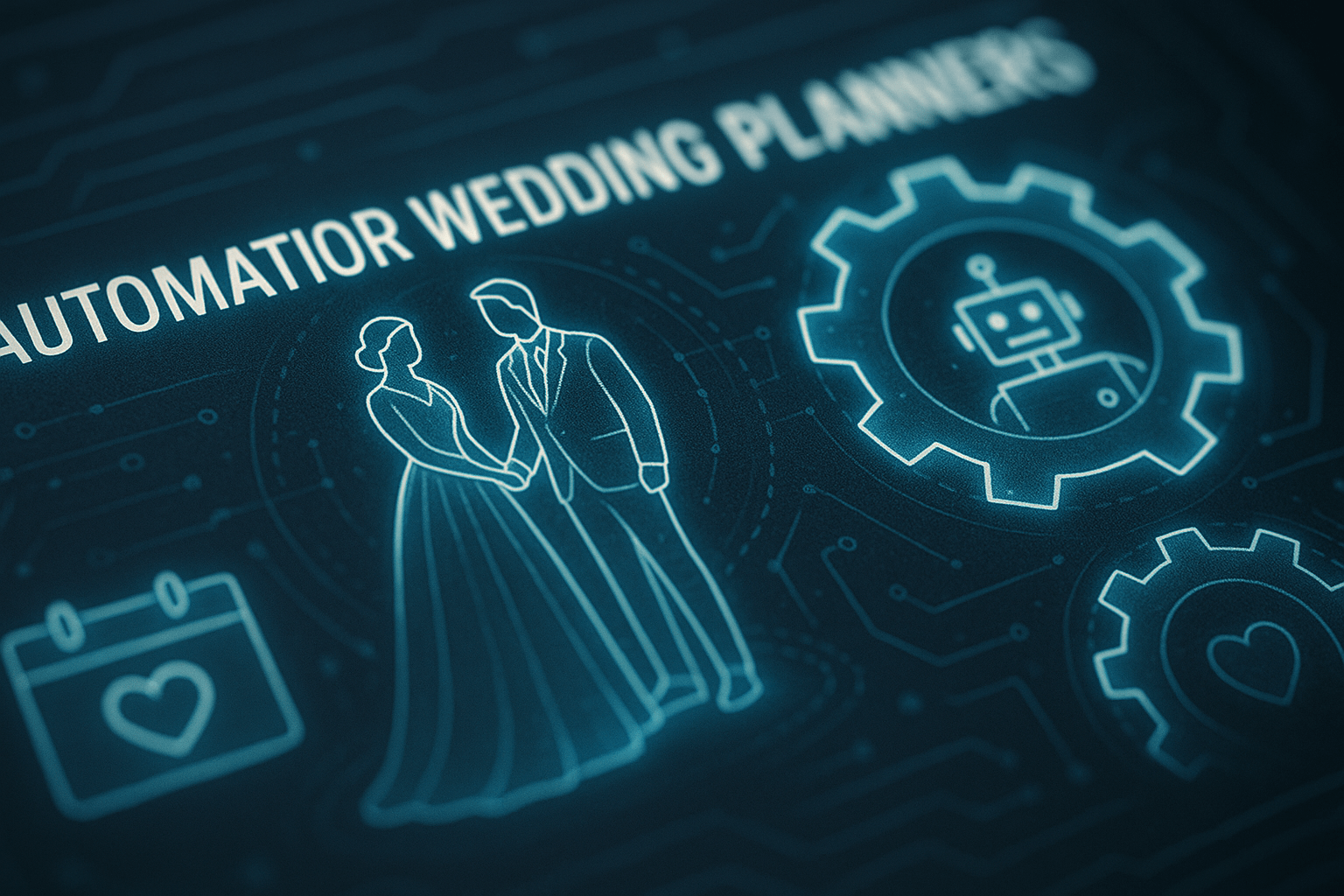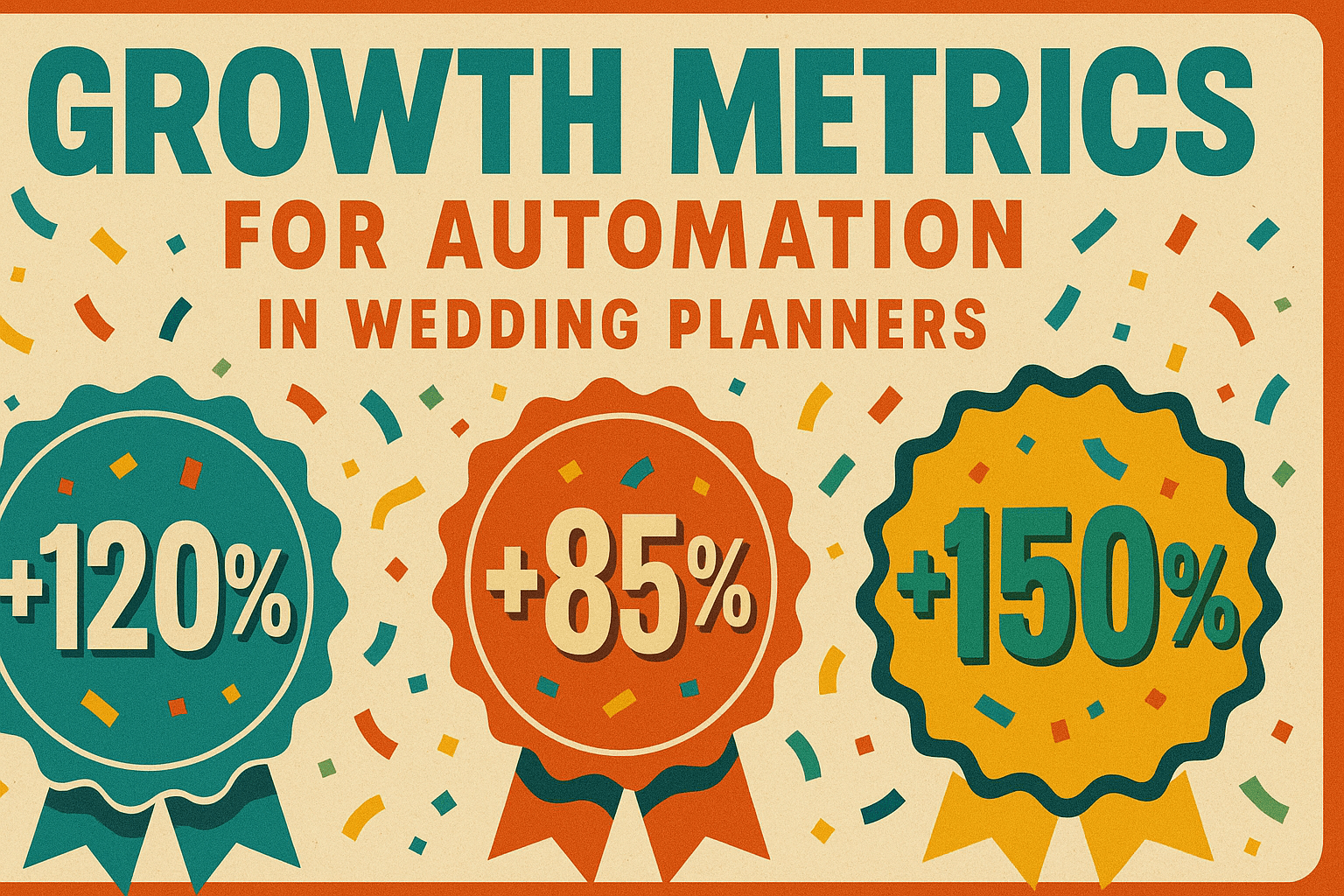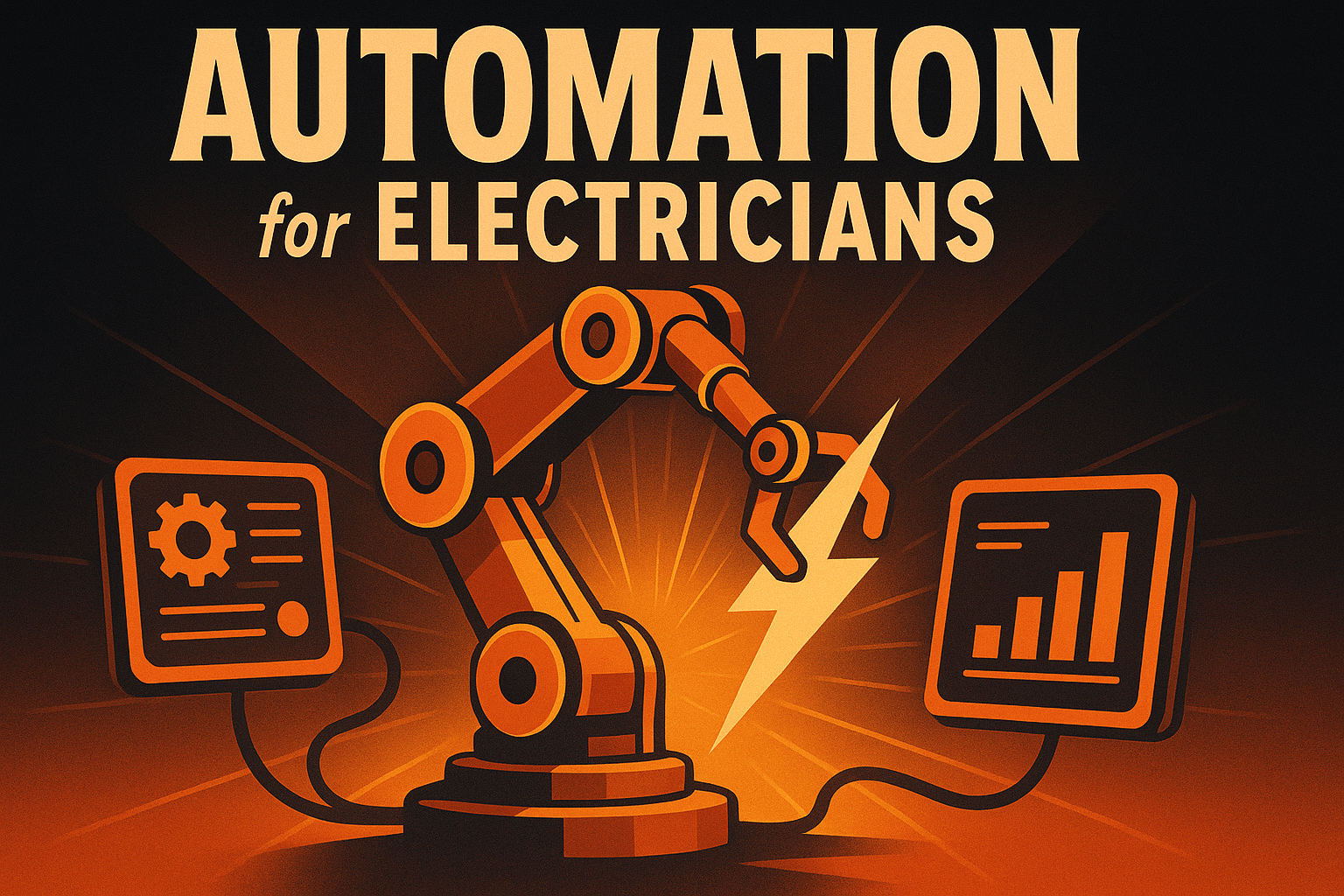Complete Automation Guide for Wedding Planners: Streamline Your Business in 90 Days
by Design Delulu Editorial · October 11, 2025

Wedding planners juggle dozens of clients, hundreds of vendor relationships, and thousands of details that can make or break someone's most important day. The difference between thriving and merely surviving often comes down to one thing: how effectively you automate the repetitive tasks that consume your time without adding value. Automation isn't about replacing the personal touch that makes your service exceptional—it's about eliminating the administrative burden that prevents you from delivering it.
The wedding industry has reached an inflection point where manual processes are no longer sustainable. Modern couples expect instant communication, real-time updates, and seamless coordination across every touchpoint. Meanwhile, your business demands accurate tracking, clean data, and measurable ROI from every marketing dollar. Smart automation bridges this gap, giving you the systems to scale your revenue without proportionally scaling your workload or stress levels.

Why Automation Transforms Wedding Planning Businesses
Wedding planners face unique operational challenges that make automation particularly valuable. Unlike other service businesses with standardized deliverables, you're managing highly customized experiences with hard deadlines, multiple stakeholders, and zero margin for error. Every wedding has dozens of moving parts—venue coordination, vendor management, timeline creation, budget tracking, guest communications, and day-of execution—all requiring meticulous attention and timely follow-up.
The manual approach to these tasks creates bottlenecks that limit your capacity. When you're spending hours each week sending reminder emails, updating spreadsheets, chasing vendor confirmations, and responding to repetitive client questions, you're trading your highest-value activities (consultation, creative planning, relationship building) for administrative work that could be systematized. This not only caps your revenue potential but also increases burnout risk during peak wedding season.
Strategic automation solves this by handling the predictable, repetitive elements of your workflow while preserving the human touchpoints that differentiate your service. Automated email sequences can nurture inquiries, onboard new clients, and send timeline reminders. Integrated systems can sync vendor information, track payments, and flag overdue tasks. Analytics platforms can measure which marketing channels bring qualified leads and which packages generate the highest profit margins. The result is a business that runs smoother, scales faster, and delivers more consistent client experiences.
Core Automation Systems That Drive Results
Effective automation for wedding planners requires integrating several systems that work together to create a seamless operational engine. The foundation starts with client relationship management—a CRM configured specifically for the wedding planning journey. This isn't just contact storage; it's an intelligent system that tracks each couple's stage in your process, automatically assigns tasks based on their wedding date, and triggers communications at optimal moments throughout their planning timeline.
Marketing automation forms the second pillar, connecting your lead generation efforts to conversion outcomes. This includes event tracking that monitors how potential clients interact with your website, which services they explore, and what content resonates most. When integrated with Google Analytics 4 and server-side tagging, you gain visibility into the complete customer journey—from the blog post that first attracted them to the testimonial that convinced them to book. This data feeds attribution models that reveal your true marketing ROI, allowing you to invest confidently in channels that actually convert.
Workflow automation handles the operational tasks that consume disproportionate time. Vendor questionnaires that automatically populate planning documents. Payment reminders that send themselves based on invoice due dates. Timeline templates that adjust dynamically when wedding dates shift. Task dependencies that ensure nothing falls through the cracks. These systems don't replace your expertise—they amplify it by ensuring your best processes execute consistently across every client engagement, regardless of how busy you are.
Measurement and reporting automation closes the loop by aggregating scattered data into actionable dashboards. Instead of manually compiling numbers from multiple platforms, you have a single source of truth showing key metrics: inquiry-to-booking conversion rates, average package values, client acquisition costs, vendor performance scores, and seasonal trends. Regular reporting becomes automatic, giving you the insights to optimize your business strategy without the tedious data gathering that typically prevents planners from engaging with their numbers.

Your 90-Day Automation Implementation Roadmap
Successful automation implementation follows a structured approach that builds capability progressively while delivering quick wins that validate the investment. The first 30 days focus on discovery and foundation setting. During this phase, you'll audit your current processes to identify the highest-impact automation opportunities—typically client onboarding sequences, inquiry follow-up, and basic vendor coordination. You'll also establish your measurement framework, defining the specific metrics that indicate success for your business, whether that's reducing administrative time, increasing booking rates, or improving client satisfaction scores.
The blueprint phase occupies days 31-60, where strategy becomes specification. This is when you design the exact workflows that will power your automation: the trigger points, the decision logic, the content sequences, and the integration architecture. For wedding planners, this typically includes mapping the complete client journey from inquiry to post-wedding follow-up, identifying every communication touchpoint and decision point along the way. You'll also configure your tracking plan, ensuring that every meaningful interaction—inquiry form submissions, consultation bookings, package selections, referral sources—is captured accurately for analysis.
Days 61-90 focus on build, launch, and optimization. Your automation sequences go live with careful testing and monitoring. Initial data starts flowing through your tracking systems, populating dashboards that reveal patterns in your business. This is where you refine based on real-world performance: adjusting email timing when open rates indicate better windows, tweaking form fields that create friction in conversions, and optimizing automation rules based on actual client behavior. The goal isn't perfection on day 90—it's having a solid operational foundation that continues improving through data-driven iteration.
Key Benefits
- Event tracking and ecommerce monitoring with GA4 and server-side tagging that captures complete client journey data
- Source-of-truth dashboards in Looker Studio providing real-time visibility into business performance metrics
- Attribution modeling configured to match your specific funnel stages and buyer journey touchpoints
- Data governance protocols ensuring consistent, clean information across all integrated platforms
- Time savings of 15-25 hours per week through automated client communications and vendor coordination
- Increased booking conversion rates by delivering faster, more personalized responses to inquiries
- Improved client satisfaction through reliable, timely communications that never miss critical milestones
How It Works
- Discovery & Goals: We begin by clarifying your specific business outcomes, operational constraints, and success metrics. This includes analyzing your current client volume, average package values, seasonal patterns, and growth objectives to ensure automation serves your strategic priorities.
- Blueprint: Design the comprehensive strategy, technical architecture, and measurement plan customized for your wedding planning business. This phase maps every client touchpoint, vendor interaction, and internal process that benefits from automation.
- Build & Launch: Implement the systems, conduct thorough quality assurance testing, and deploy with complete tracking in place. Every automation sequence launches with monitoring to ensure it performs as designed and delivers the intended results.
- Optimize: Iterate based on performance data, doubling down on what works and refining what doesn't. Ongoing optimization ensures your automation systems evolve with your business and continue delivering measurable value.
Deliverables
- Comprehensive tracking plan documenting all events, conversions, and data flows
- Google Analytics 4 and server-side tagging implementation for accurate attribution
- Custom Looker Studio dashboards showing business-critical metrics and trends
- Attribution model configuration matched to your sales funnel and marketing channels
- Client journey automation sequences for inquiry, onboarding, milestone, and post-wedding stages
- Vendor coordination workflows with automated reminders and status tracking
- Integration architecture connecting your CRM, email platform, payment systems, and analytics
- Documentation and training for ongoing management and optimization
Best Practices
- Prioritize automation for highest-impact pages and flows first, typically inquiry forms and initial consultation booking
- Pair every creative asset with measurement; ensure each landing page, email, and social post has defined KPIs
- Use templates and systematized processes to scale quickly without sacrificing quality or personalization
- Close the feedback loop with weekly performance reviews and quarterly strategic resets to ensure continuous improvement
- Maintain the human touch at critical moments—automation should enhance relationships, not replace them
- Test extensively before full deployment; wedding planning has no room for automation failures during client experiences
- Build redundancy into critical workflows so technical issues don't disrupt client service
- Document everything for team training and to enable smooth scaling as your business grows
Industry-Specific Tips for Wedding Planners
- Map search intent to wedding planning buyer stages—awareness (venue research), consideration (planner selection), decision (package comparison)
- Use social proof and outcome-focused messaging early in the client journey to build trust and credibility quickly
- Measure against a single source of truth dashboard that aggregates lead sources, conversion rates, and booking values
- Ship small improvements frequently; test new automation sequences with a subset of clients before full rollout
- Automate seasonal communications—venue tours in peak booking season, off-season promotions, holiday greetings
- Track vendor performance metrics to identify your most reliable partners and optimize referral relationships
- Create automated post-wedding sequences for testimonial requests, referral generation, and anniversary reminders
- Use data to optimize package pricing based on actual conversion rates and profit margins by service tier

Frequently Asked Questions
Let’s level up your Wedding Planners business
Need services that actually move the needle for Wedding Planners? See our approach, pricing, and timelines—then book a quick call.
Additional Resources
- Schedule Your Automation Strategy Call
Book a consultation to discuss your specific automation needs. We'll review your current processes, identify high-impact opportunities, and outline a customized roadmap for implementing systems that transform your wedding planning business.
- View Our Wedding Planner Automation Portfolio
Explore real-world examples of automation systems we've built for wedding planning businesses. See the workflows, dashboards, and integrations that helped planners save time, increase bookings, and scale their operations efficiently.
- Access Free Wedding Planner Tools
Download free resources including automation templates, workflow checklists, and tracking spreadsheets designed specifically for wedding planners. Start streamlining your operations today with our proven tools and frameworks.
Related Reading

Discover how automation for electricians streamlines scheduling, invoicing, lead tracking, and customer follow-ups to boost revenue and efficiency. Get started today.

Discover how automation streamlines furniture & home decor operations with GA4 tracking, attribution modeling, and data-driven dashboards. Get your 90-day implementation roadmap.
